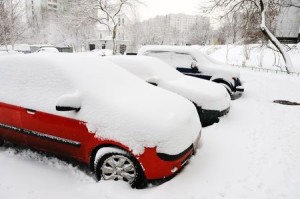Whether your car is cruising down the motorway at 70mph or bobbing about in town, the engine is generating heat – well it’s not called a combustion engine for nothing.
In fact only about 28% of the thermal energy released by burning fuel in the engine is available for driving the car; 42% is lost in various processes, and 30% has to be actively removed to prevent overheating.
The coolant system is there to remove this excess heat by pumping ‘water’ from the hot parts of the engine and into the radiator, where it is cooled by air passing through the radiator grille at the front of the car.
Notice I wrote ‘water’ and not water – that’s because the liquid used is actually a mixture of water and ethylene glycol, otherwise known as antifreeze, in a ratio of about 1:1. This noxious additive has a number of benefits:
- It has excellent heat transfer properties
- It prevents the water corroding the metal parts of the cooling system
- It prevents scale build-up inside the cooling systems
- It is stable at high temperatures
- It prevents the coolant freezing at low temperatures
This last benefit is very important as we approach winter; although last year was very mild, the year before we saw many days below freezing at night and quite a few below -10 degrees C. Without antifreeze in your cooling system your engine would be frozen solid every morning and your car wouldn’t be going anywhere.
Coolant systems are sealed and on most cars should not need topping up; they will be flushed out and refilled as part of the normal service routine. However if you’ve noticed the water levels in your coolant tank reducing, and have been topping it up with plain water, then although this will keep the engine alive its possible most of the precious antifreeze has exited the system from the bottom while you’ve been refilling at the top.
If this is the case you should be bringing the car to us to be checked out as you probably have a leak somewhere in the cooling system that is only going to get worse (it could be as simple as a loose hose clip or corroded hose which is cheap to fix).
In the meantime you need to replace the lost antifreeze before we have a cold snap; fortunately it’s easily done and not expensive.

Choosing Antifreeze
Antifreeze can be bought at most petrol stations and car accessory shops, and can be either pre-mixed with water or concentrated. If you buy concentrated you’ll need to know the coolant capacity of your car (check the owner’s manual) to work out how much to add, or you might need to estimate how low the level of coolant is and add the right amount just to top it up.
Although you can find “universal” antifreeze on sale it’s much better to find one recommended by the manufacturer. As a rule of thumb cars made after 1998 normally need antifreeze that uses silicate-free, organic acid technology (OAT), which offers better corrosion protection. Cars made before 1998 usually need antifreeze that isn’t OAT-based and that does contain silicate. Your car’s handbook will probably recommend a type and/or brand.
ps: Make sure your car’s engine is completely cool before taking the cap off the coolant reservoir.
pps: If you notice that the existing coolant mixture is cloudy or sludgy this may indicate a problem with combustion gases or oil getting into the cooling system. This should be checked out by a garage asap.
